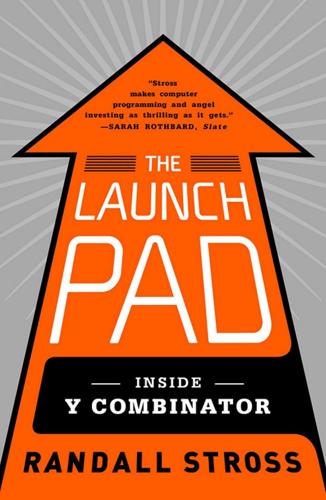
The Launch Pad: Inside Y Combinator, Silicon Valley's Most Exclusive School for Startups
by
Randall Stross
Published 4 Sep 2013
Jason Kincaid, “Codecademy: A Slick, Fun Way to Teach Yourself How to Program,” TC, August 18, 2011, http://techcrunch.com/2011/08/18/codecademy-a-slick-fun-way-to-teach-yourself-how-to-program/. 5. PG, “Student’s Guide.” 6. Paul Buchheit, “The Most Important Thing to Understand About New Products and Startups,” Paul Buchheit blog, February 17, 2008, http://paulbuchheit.blogspot.com/2008/02/most-import-thing-to-understand-about.html. 7. Livingston, Founders at Work; Paul Buchheit, “Serendipity Finds You,” Paul Buchheit blog, October 24, 2010, http://paulbuchheit.blogspot.com/2010/10/serendipity-finds-you.html. 8. Buchheit was one of four cofounders of FriendFeed, which was acquired by Facebook in 2009 for an undisclosed amount.
…
Michael Arrington, “TechStars: Summer Camp (and Cash) for Entrepreneurs,” TC, January 25, 2007, http://techcrunch.com/2007/01/25/techstars-summer-camp-for-entrepreneurs/. 6. When Paul Buchheit pointed to TechStars’ copying the questions, he was writing as an observer of startups and seed funds; this was three years before he became a YC partner. Paul Buchheit, “Did Anyone Else Notice That TechStars and Y Combinator Have the Same Application?” Paul Buchheit blog, March 26, 2007, http://paulbuchheit.blogspot.com/2007/03/anyone-else-notice-that-techstars-and-y.html; discussion on HN, http://news.ycombinator.com/item?
…
Using an internal valuation used by Facebook the previous month, the tech business blog estimated the value of shares issued to FriendFeed’s owners to be $328 million. Alyson Shontell, “Now We Know How Many Millions of Dollars These Startups Made Selling to Facebook,” SAI Business Insider, February 2, 2012, www.businessinsider.com/facebook-acquisition-shares-stock-startups-2012-2. 9. Paul Buchheit, “Angel Investing: My First Three Years,” Paul Buchheit blog, January 3, 2011, http://paulbuchheit.blogspot.com/2011/01/angel-investing-my-first-three-years.html. 10. Buchheit, “Angel Investing.” 11. In 1982, the SEC set forth specific qualifying amounts—a net worth exceeding $1 million, or annual income greater than $200,000 in the previous two years, with some fine print.
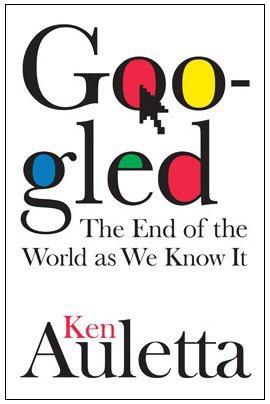
Googled: The End of the World as We Know It
by
Ken Auletta
Published 1 Jan 2009
Sergey did all the talking”: author interview with Eric Schmidt, October 9, 2007. 72 “In exchange for sitting down with me”: Search, John Battelle. 72 Schmidt became Google’s “catcher”: author interview with Eric Schmidt, October 9, 2007. 72 “I don’t know what a catcher does”: author interview with Sergey Brin, September 18, 2008. 72 “He made us better understand”: author interview with Marissa Mayer, November 4, 2008. 73 “I’ll call you Monday morning”: author interview with Eric Schmidt, October 9, 2007. 73 He kept Page and Brin “focused”: author interview with Paul Buchheit, June 9, 2008. 73 Semel’s arrival aroused the righteous anger: Richard Siklos, “When Terry Met Jerry Yahoo,” New York Times, January 29, 2006. 73 “Terry brought two things”: author interview with Bobby Kotick, August 17, 2008. 74 “Semel did not know”: author interview with Ron Conway March 25, 2008. 74 “Help me with something” ... “they did not want to sell”: author interview with Terry Semel, July 10, 2008; confirmed by author interview with Eric Schmidt, March 26, 2008. 75 “Don’t be evil” : author interviews with Paul Buchheit, June 9, 2008, and David Krane, November 3, 2008; Search, John Battelle. 75 “Do you think Hitler thought he was evil?”
…
Google honors its engineers as creators, treating them the way the legendary management consultant Peter Drucker suggested a half century ago that companies should treat “knowledge workers,” said Hal R. Varian, Google’s chief economist. But an engineering-dominated culture has drawbacks. “In some ways, they have not done enough to communicate what they are doing internally or externally,” said Paul Buchheit, Google’s twenty-third employee, the one who coined their “Don’t be evil” motto and who left with three other Googlers to launch a social network, FriendFeed, in 2006. “Part of the culture is not to communicate. That’s what we did when we started Gmail. We put it out without an announcement.” In beta testing new products, Google does get feedback from users.
…
They met with about fifteen candidates, all accomplished executives who were invited to attend TGIF, to share meals with the founders in the cafeteria, to sit in on staff meetings. Brin went heli-skiing with one prospective CEO who boasted that he was an expert at the sport. (He wasn’t.) “They thought everyone they had talked to was a clown,” Paul Buchheit said. “The candidates didn’t understand technology.” Omid Kordestani said Page and Brin “knew in their gut that they wanted a fellow intellectual.” The VCs feared the founders would find an excuse to reject every candidate, which was true. Marissa Mayer said she believes the CEO search was so protracted in part because “they were not convinced it needed to happen.”
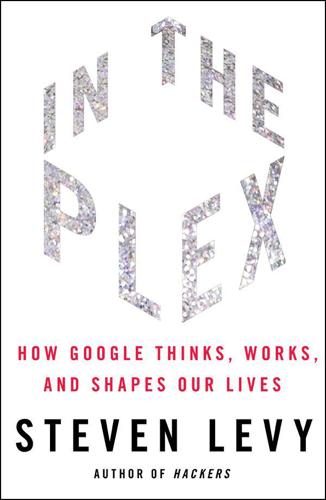
In the Plex: How Google Thinks, Works, and Shapes Our Lives
by
Steven Levy
Published 12 Apr 2011
Jeff Dean pitched in to merge Phil with the AdWords technology, while another team tried to build all of this into a complete self-service system for advertisers. As it turned out, Harik and Shazeer were not the only Google engineers working on a project that analyzed content and extracted keywords that could be used for ads. Paul Buchheit, one of the first twenty-five hires at Google, was creating a web-based email system, and he had an idea for analyzing the text of emails so Google could run ads alongside them. By early 2003, he already had a pilot project working that served ads alongside email. Buchheit’s technology wasn’t used in the Google publisher project, but “it was a great proof of concept,” says Wojcicki.
…
Campbell convinced the executives at Google that they should do something similar. On July 19, 2001, Stacy Sullivan, who had come to Google to run human resources, pulled together a group for that purpose. They gathered in Charlie’s, about fifteen of them from various parts of the company, including David Krane from communications, Paul Buchheit and Amit Patel from engineering, and Joan Braddi, VP of search services. Marissa Mayer was there, as was Salar Kamangar. And Campbell. Page and Brin were not in attendance. Charlie made smoothies. It was an unusual meeting. Sullivan explained the format. People would identify Google’s values, and she would write down the good ones with a marker on a giant pad she’d set up on an easel.
…
That was a riff on the twice-weekly roller hockey games that the Googlers played in the parking lot—since no one wore padding, there were frequent reminders not to emasculate anyone with a hard rubber disk. (Minor injuries were nonetheless common.) Another one stipulated, “Google will strive to honor all its commitments.” As Sullivan scrawled these nostrums on the big pad, Paul Buchheit was thinking, This is lame. Jawboning about citizenship and values seemed like the kind of thing you do at a big company. He’d seen enough of that at his previous job at Intel. At one point the chipmaker had given employees little cards with a list of values you could attach to your badge. If something objectionable came up you were to look at your little corporate values card and say, “This violates value number five.”

Valley of Genius: The Uncensored History of Silicon Valley (As Told by the Hackers, Founders, and Freaks Who Made It Boom)
by
Adam Fisher
Published 9 Jul 2018
It was like a religious thing with them, so they wanted to make sure that nobody would mistake Google ads for search results. Paul Buchheit: Sometime in early 2000 there was a meeting to decide on the company’s values. They invited a collection of people who had been there for a while. I was sitting there trying to think of something that would be really different and not one of these usual “strive for excellence” sort of statements. I also wanted something that, once you get it in there, would be hard to take out. Brad Templeton: “Don’t be evil” was the phrase. Paul Buchheit: It just sort occurred to me. Sergey Brin: We have tried to define precisely what it means to be a force for good—always do the right, ethical thing.
…
The first ads were July or August of ’99. David Cheriton: The thing that many people don’t recall from that first web era was that a lot of the companies that started out as search companies introduced advertising and then compromised the search in favor of the advertising, so nobody trusted the search. Paul Buchheit: Companies would just mix the ads in with the regular search results so people would think it was a search result. It’s kind of like fake news or something. Brad Templeton: In most of the publishing business, there is a history of having a wall between editorial and advertising. Google really took that to heart.
…
Sergey Brin: We have tried to define precisely what it means to be a force for good—always do the right, ethical thing. Ultimately, “Don’t be evil” seems the easiest way to summarize it. Paul Buchheit: It’s also a bit of a jab at the other companies, especially our competitors, who at the time were, in our opinion, kind of exploiting the users to some extent. They were tricking them by selling search results—which we considered a questionable thing to do, because people didn’t realize that they were ads. Sergey Brin: We think that’s a slippery slope. Brad Templeton: That’s what “being evil” would be, actually. Scott Hassan: Then Larry came up with a great idea: having self-serve ads, where you could just go to a website and click a couple things, and then ads would be shown on the Google website, without talking to a salesperson at all.
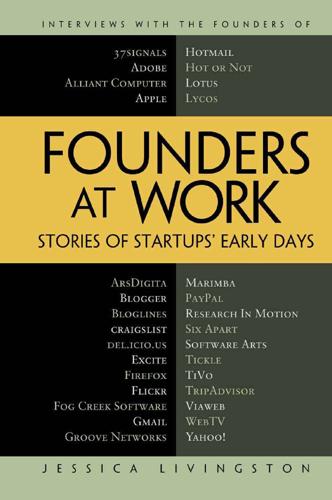
Founders at Work: Stories of Startups' Early Days
by
Jessica Livingston
Published 14 Aug 2008
The funny thing is that they won’t sue you until you’re successful, because why sue someone who is a failure? And this is particularly important if you start out at a big company like Google or Amazon, because they have a lot of time and money to spend on these kinds of things. C H A P T E 12 R Paul Buchheit Creator, Gmail Paul Buchheit was Google’s 23rd employee. He was the creator and lead developer of Gmail, Google’s web-based email system, which anticipated most aspects of what is now called Web 2.0. As part of his work on Gmail, Buchheit developed the first prototype of AdSense, Google’s program for running ads on other websites.
…
For Da and PG Contents FOREWORD . . . . . . . . . . . . . . . . . . . . . . . . . . . . . . . . . . . . . ix PREFACE . . . . . . . . . . . . . . . . . . . . . . . . . . . . . . . . . . . . . . . . xi ABOUT THE AUTHOR . . . . . . . . . . . . . . . . . . . . . . . . . . . . . . . xiii ACKNOWLEDGMENTS . . . . . . . . . . . . . . . . . . . . . . . . . . . . . . . xv INTRODUCTION . . . . . . . . . . . . . . . . . . . . . . . . . . . . . . . . . . xvii CHAPTER 1 MAX LEVCHIN PayPal . . . . . . . . . . . . . . . . . . . . . . . . . . . . . . . . . 1 CHAPTER 2 SABEER BHATIA Hotmail. . . . . . . . . . . . . . . . . . . . . . . . . . . . . . . . 17 CHAPTER 3 STEVE WOZNIAK Apple Computer . . . . . . . . . . . . . . . . . . . . . . . . . . 31 CHAPTER 4 JOE KRAUS Excite . . . . . . . . . . . . . . . . . . . . . . . . . . . . . . . . . 61 CHAPTER 5 DAN BRICKLIN Software Arts . . . . . . . . . . . . . . . . . . . . . . . . . . . . 73 CHAPTER 6 MITCHELL KAPOR Lotus Development. . . . . . . . . . . . . . . . . . . . . . . . . 89 CHAPTER 7 RAY OZZIE Iris Associates, Groove Networks . . . . . . . . . . . . . . . . 103 CHAPTER 8 EVAN WILLIAMS Pyra Labs (Blogger.com) . . . . . . . . . . . . . . . . . . . . . 111 CHAPTER 9 TIM BRADY Yahoo. . . . . . . . . . . . . . . . . . . . . . . . . . . . . . . . 127 CHAPTER 10 MIKE LAZARIDIS Research In Motion . . . . . . . . . . . . . . . . . . . . . . . . 141 v vi Contents CHAPTER 11 ARTHUR VAN HOFF Marimba . . . . . . . . . . . . . . . . . . . . . . . . . . . . . . 153 CHAPTER 12 PAUL BUCHHEIT Gmail . . . . . . . . . . . . . . . . . . . . . . . . . . . . . . . . 161 CHAPTER 13 STEVE PERLMAN WebTV . . . . . . . . . . . . . . . . . . . . . . . . . . . . . . . 173 CHAPTER 14 MIKE RAMSAY TiVo. . . . . . . . . . . . . . . . . . . . . . . . . . . . . . . . . 191 CHAPTER 15 PAUL GRAHAM Viaweb . . . . . . . . . . . . . . . . . . . . . . . . . . . . . . . 205 CHAPTER 16 JOSHUA SCHACHTER del.icio.us . . . . . . . . . . . . . . . . . . . . . . . . . . . . . . 223 CHAPTER 17 MARK FLETCHER ONElist, Bloglines . . . . . . . . . . . . . . . . . . . . . . . . . 233 CHAPTER 18 CRAIG NEWMARK craigslist . . . . . . . . . . . . . . . . . . . . . . . . . . . . . . . 247 CHAPTER 19 CATERINA FAKE Flickr . . . . . . . . . . . . . . . . . . . . . . . . . . . . . . . . 257 CHAPTER 20 BREWSTER KAHLE WAIS, Internet Archive, Alexa Internet . . . . . . . . . . . . . 265 CHAPTER 21 CHARLES GESCHKE Adobe Systems . . . . . . . . . . . . . . . . . . . . . . . . . . 281 CHAPTER 22 ANN WINBLAD Open Systems, Hummer Winblad . . . . . . . . . . . . . . . . 297 CHAPTER 23 DAVID HEINEMEIER HANSSON 37signals . . . . . . . . . . . . . . . . . . . . . . . . . . . . . . 309 CHAPTER 24 PHILIP GREENSPUN ArsDigita . . . . . . . . . . . . . . . . . . . . . . . . . . . . . . 317 CHAPTER 25 JOEL SPOLSKY Fog Creek Software . . . . . . . . . . . . . . . . . . . . . . . . 345 CHAPTER 26 STEPHEN KAUFER TripAdvisor. . . . . . . . . . . . . . . . . . . . . . . . . . . . . 361 CHAPTER 27 JAMES HONG HOT or NOT . . . . . . . . . . . . . . . . . . . . . . . . . . . 377 CHAPTER 28 JAMES CURRIER Tickle . . . . . . . . . . . . . . . . . . . . . . . . . . . . . . . . 387 CHAPTER 29 BLAKE ROSS Firefox . . . . . . . . . . . . . . . . . . . . . . . . . . . . . . . 395 Contents vii CHAPTER 30 MENA TROTT Six Apart . . . . . . . . . . . . . . . . . . . . . . . . . . . . . . 405 CHAPTER 31 BOB DAVIS Lycos . . . . . . . . . . . . . . . . . . . . . . . . . . . . . . . . 419 CHAPTER 32 RON GRUNER Alliant Computer Systems, Shareholder.com . . . . . . . . . . 427 CHAPTER 33 JESSICA LIVINGSTON Y Combinator . . . . . . . . . . . . . . . . . . . . . . . . . . . 447 INDEX . . . . . . . . . . . . . . . . . . . . . . . . . . . . . . . . . . . . . . . . 455 Foreword Sprinters apparently reach their highest speed right out of the blocks, and spend the rest of the race slowing down.
…
I’d like to thank many people for their willingness to make introductions: Jim Baum, Patrick Chung, Mark Coker, Jay Corscadden, Rael Dornfest, Jed Dorsheimer, Randy Farmer, Steve Frankel, Anand Gohel, Laurie Glass, James Hong, Mitch Kapor, Morgan Ley, Mike Palmer, Tom Palmer, Bryan Pearce, Andrew Pojani, Will Price, Ryan Singel, Langley Steinert, Chris Sacca, and Zak Stone. Thanks to Kate Courteau for creating cozy offices for me to work in; Lesley Hathaway for all her advice and support; Alaina and David Sloo for their many introductions; and Sam Altman, Paul Buchheit, Lynn Harris, Marc Hedlund, and Aaron Swartz, who read early chapters of the book. I owe thanks to Lisa Abdalla, Michele Baer, Jen Barron, Ingrid Bassett, Jamie Cahill, Jessica Catino, Alicia Collins, Caitlin Crowe, Julie Ellenbogen, John Gregg, Chrissy Hathaway, Katie Helmer, Susan Livingston, Nadine Miller, Sara Morrison, Bridget O’Brien, Becky Osborne, Allison Pellegrino, Jennifer Stevens, and Suzanne Woodard for their encouragement.

The New Class Conflict
by
Joel Kotkin
Published 31 Aug 2014
Welcome to Obama’s Post-Fiscal-Cliff World,” The Foundry, January 15, 2013, http://blog.heritage.org/2013/01/15/smaller-paycheck-payroll-tax-hike; Ryan Grim, “Finally, A List Of All The Center For American Progress’ 2013 Corporate Donors,” Huffington Post, December 13, 2013, http://www.huffingtonpost.com/2013/12/13/cap-corporate-donors_n_4440134.html; Paul Buchheit, “Average American Families Pays $6K a Year in Big Business Subsidies,” Moyers & Company, September 24, 2013, http://billmoyers.com/2013/09/24/average-american-family-pays-6k-a-year-in-subsidies-to-big-business; Crain and Crain, “The Impact of Regulatory Costs on Small Firms.” 21. Tracy, “Tally of U.S.
…
Metropolitan Areas,” New Geography, September 11, 2013, http://www.newgeography.com/content/003921-inequality-largest-us-metropolitan-areas; Piketty, Capital in the Twenty-First Century, pp. 93–95, 471; Dean Baker, “Economic Policy in a Post-Piketty World,” Huffington Post, April 22, 2014, http://www.huffingtonpost.com/dean-baker/economic-policy-in-a-post_b_5187840.html; John B. Judis, “Coming Soon: The United States of Comcast Comcast Time-Warner Merger Will Create Orwellian Monopoly,” New Republic, February 13, 2014; Paul Buchheit, “Average American Families Pays $6K a Year in Big Business Subsidies,” Moyers & Company, September 24, 2013, http://billmoyers.com/2013/09/24/average-american-family-pays-6k-a-year-in-subsidies-to-big-business. 6. Annie Lowrey, “50 Years Later, War on Poverty Is a Mixed Bag,” New York Times, January 4, 2014; Neil Shah, “U.S.

WTF?: What's the Future and Why It's Up to Us
by
Tim O'Reilly
Published 9 Oct 2017
Everybody works, they just work a little less.” The generous redistribution of oil profits and a strong social safety net funded by the wealth that is understood to belong to all makes Norway one of the happiest and wealthiest countries in the world. For a technology perspective, I turned to Paul Buchheit, creator of Gmail and now a partner at Y Combinator, and Sam Altman, the head of Y Combinator. In a 2016 conversation, Paul said to me: “There may need to be two kinds of money: machine money, and human money. Machine money is what you use to buy things that are produced by machines. These things are always getting cheaper.
…
It is part of what makes us human, and in many ways, it is entirely independent of the monetary economy. It is a mistake to think that “the creative economy” is limited to entertainment and the arts. Creativity is the focus of a competition for accumulation as intense as any that characterizes Paul Buchheit’s machine money. It is at the heart of industries like fashion, real estate, and luxury goods, all of which depend on the competition among people who are already rich to own more, to enjoy, or sometimes just to show off their wealth. Creativity money is another way of saying that we pay a premium for the good things of life beyond the basics.
…
Satya Nadella, Reid Hoffman, Jeff Immelt, Peter Schwartz, Peter Bloom, Andy McAfee, Erik Brynjolfsson, David Autor, Larry Katz, Anne-Marie Slaughter, Sebastian Thrun, Yann LeCun, Joaquin Quiñonero Candela, Mike George, Rana Foroohar, Robin Chase, David Rolf, Andy Stern, Natalie Foster, Betsy Masiello, Jonathan Hall, Lior Ron, Paul Buchheit, Sam Altman, Esther Kaplan, Carrie Gleason, Zeynep Ton, Mikey Dickerson, Wael Ghonim, Tim Hwang, Henry Farrell, Amy Sellars, Mike McCloskey, Hank Green, Brandon Stanton, Jack Conte, Limor Fried, Phil Torrone, Seth Sternberg, Palak Shah, Keller Rinaudo, Stephane Kasriel, Bryan Johnson, Patrick Collison, Roy Bahat, Paddy Cosgrave, Steven Levy, Lauren Smiley, Bess Hochstein, Nat Torkington, Clay Shirky, Lawrence Wilkinson, Jessi Hempel, Mark Burgess, Carl Page, Maggie Shiels, Adam Davidson, and Winnie King, you also gave me the gift of your time and insight during the research and writing that led up to this book.

The Optimist: Sam Altman, OpenAI, and the Race to Invent the Future
by
Keach Hagey
Published 19 May 2025
YC needed something like $10 million, but McAdoo knew that would be hard to get past the Sequoia partners who had just put out the “RIP Good Times” deck. So, to shore up that winter’s batch of founders, Graham put together a $2 million investment round that Sequoia led, joined by a smattering of angel investors including Ron Conway, an early investor in Google and Facebook, and Paul Buchheit, the creator of Gmail. (That winter class would end up including Airbnb, which McAdoo led Sequoia’s investment in, one of the biggest wins to ever come out of the accelerator.) To get the rest, McAdoo needed to subject Y Combinator to the rigor of a true Sequoia investment process, putting together a portfolio construction model, including the amount of return expected.
…
“I’m convinced there’s a fundamental change happening in the way work gets done,” he wrote. “It’s becoming normal to start a startup. There will be a lot more startups in 10 years than there are now, and if YC is going to fund them, we’ll have to grow proportionally bigger.”2 The problem was that Graham’s method of working did not, in Valley-speak, “scale.” As Paul Buchheit, the creator of Gmail who became one of YC’s earliest and most devoted angel investors and partners, put it, “PG’s a really great one-man show. He runs everything himself.” He wrote all of YC’s software, moderated its increasingly popular message board, Hacker News, interviewed candidates and advised them during office hours.
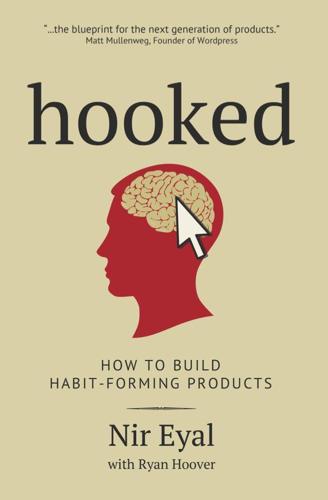
Hooked: How to Build Habit-Forming Products
by
Nir Eyal
Published 26 Dec 2013
With both Pinterest and Instagram, tiny teams generated huge value—not by cracking hard technical challenges, but by solving common interaction problems. Likewise, the fast ascent of mobile devices, including tablets, has spawned a new revolution in interface changes—and a new generation of start-up products and services designed around mobile user needs and behaviors. To uncover where interfaces are changing, Paul Buchheit, a partner at Y Combinator, encourages entrepreneurs to “live in the future.”10 A profusion of interface changes are just a few years away. Wearable technologies like Google Glass, the Oculus Rift virtual reality goggles, and the Pebble smartwatch promise to change how users interact with the real and digital worlds.

Designing for the Social Web
by
Joshua Porter
Published 18 May 2008
People who use your site with any frequency will notice the changes, and if the good ones stick, they’ll appreciate your ongoing efforts to improve. The best teams not only design the changes, but design the process for introducing the change. They experiment with methods to overcome people’s natural resistance to change, providing migration paths and clear benefits for each improvement. The Building of Gmail Paul Buchheit describes the release early, release often evolution of Gmail: I wrote the first version of Gmail in one day. It was not very impressive. All I did was stuff my own email into the Google Groups (Usenet) indexing engine. I sent it out to a few people for feedback, and they said that it was somewhat useful, but it would be better if it searched over their email instead of mine.
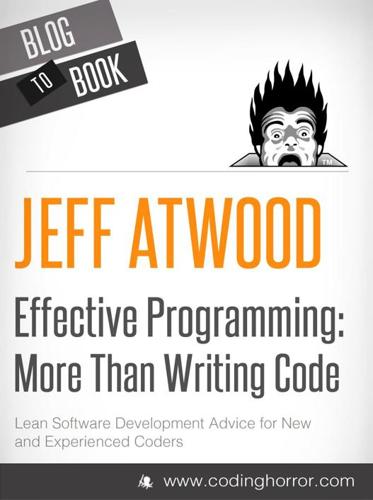
Effective Programming: More Than Writing Code
by
Jeff Atwood
Published 3 Jul 2012
That’s a virtuous public feedback loop: it says you matter and we care and everything just keeps on getting better all in one delightful gesture. And isn’t that what it’s all about? Jeff Atwood@codinghorror “I’m pretty sure the customer is not always right.” 12:23 AM – 8 Nov 11 I Repeat: Do Not Listen to Your Users Paul Buchheit on listening to users: I wrote the first version of Gmail in one day. It was not very impressive. All I did was stuff my own email into the Google Groups (Usenet) indexing engine. I sent it out to a few people for feedback, and they said that it was somewhat useful, but it would be better if it searched over their email instead of mine.
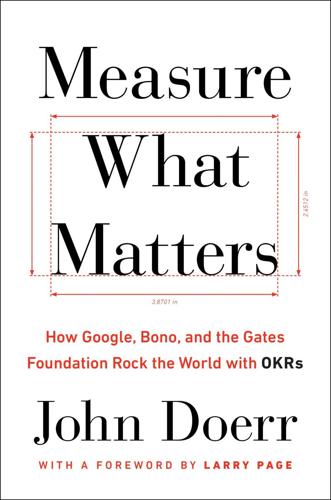
Measure What Matters: How Google, Bono, and the Gates Foundation Rock the World With OKRs
by
John Doerr
Published 23 Apr 2018
Teams that are grossly out of alignment stand out, and the few major initiatives that touch everyone are easy enough to manage directly. The antithesis of cascading might be Google’s “20 percent time,” which frees engineers to work on side projects for the equivalent of one day per week. By liberating some of the sharpest minds in captivity, Google has changed the world as we know it. In 2001, the young Paul Buchheit initiated a 20 percent project with the code name Caribou . It’s now known as Gmail, the world’s leading web-based email service. To avoid compulsive, soul-killing overalignment, healthy organizations encourage some goals to emerge from the bottom up. Say the Sand Hill Unicorns’ physical therapist attends a sports medicine conference and learns of a new regimen for injury prevention.

Blitzscaling: The Lightning-Fast Path to Building Massively Valuable Companies
by
Reid Hoffman
and
Chris Yeh
Published 14 Apr 2018
Google doesn’t always get product/market fit right (and if it had run out of money before hitting upon AdWords, the search business might have died before ever achieving that fit). This is a reflection of its very intentional product management philosophy, which relies on bottom-up innovation and a high tolerance for failure. When it works, as in Gmail, which was a bottom-up project launched by Paul Buchheit, it can produce killer products. But when it fails, it results in killed products, as demonstrated by projects like Buzz, Wave, and Glass. To overcome this risk of failure, Google relies on both its financial strength (which comes from its high gross margins, among other things) and a willingness to decisively cut its losses.
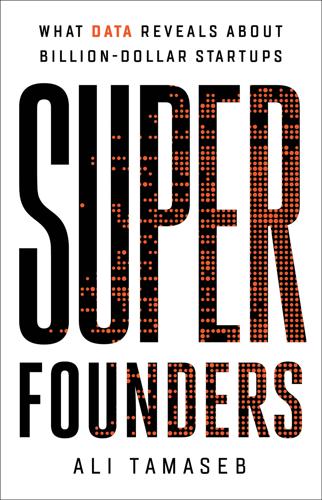
Super Founders: What Data Reveals About Billion-Dollar Startups
by
Ali Tamaseb
Published 14 Sep 2021
The Super Founders of today will create the billion-dollar companies of tomorrow. Take the Collison brothers, Patrick and John. As teenagers, the two founded Auctomatic, an auction-management system for power sellers on eBay. They brought the idea to Y Combinator in the winter of 2007 and raised a small seed round from investors including Chris Sacca and Paul Buchheit. Ten months after incorporating, Auctomatic was acquired by a Canadian public company for around $5 million, turning the Collison brothers into millionaires before their twenty-first birthdays. Not long after the acquisition, the brothers started building some side projects and found that it was very difficult to accept payments on the web.
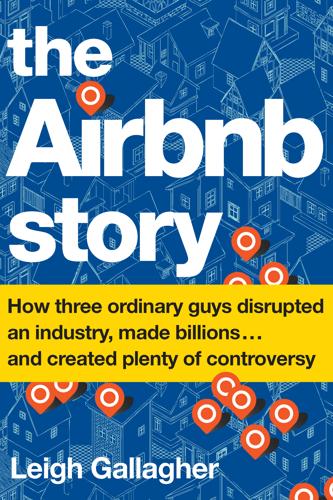
The Airbnb Story: How Three Ordinary Guys Disrupted an Industry, Made Billions...and Created Plenty of Controversy
by
Leigh Gallagher
Published 14 Feb 2017
Between their expertise and that of the program’s influential network of alumni, advisers, and investors, “YC” provided hands-on guidance for everything from incorporating and lawyering to hiring, building a business plan, selling to acquirers, and mediating disputes between founders. It was a full-on start-up school, as well known for the access it provided—through dinners, speakers, and the high degree of hand-holding provided by its leaders—as for its specific way of doing things. Its motto, “Make something people want,” originally attributed to Paul Buchheit, the creator of Gmail and now a Y Combinator partner, is one of many YC principles that often run counter to conventional MBA wisdom. Chesky would later say that although he went to RISD, he graduated from the school of Y Combinator. Graham himself has become a Silicon Valley folk hero, a prolific thinker and writer on entrepreneurialism known as much for his wisdom as for his tough-love approach.
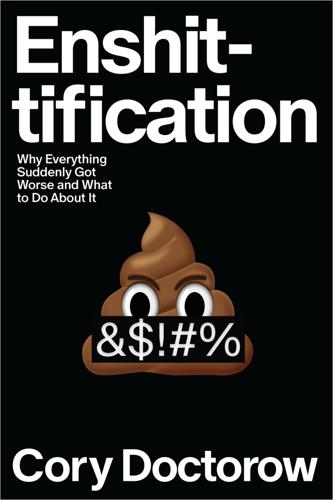
Enshittification: Why Everything Suddenly Got Worse and What to Do About It
by
Cory Doctorow
Published 6 Oct 2025
That wasn’t all: Googlers were also given “20 percent time”—one day in five to chase passion projects within the company. Most of these projects went nowhere (most non–20 percent Google projects also went nowhere), but the 20 percent program is responsible for one of Google’s few post-Search, in-house successes: Gmail, invented by Paul Buchheit as a 20 percent project in 2004. Google’s founders came out of academia. Larry Page and Sergey Brin launched the company while completing their grad studies at Stanford. Clearly, some of Google’s cultural deference to technologists reflected the founders’ academic sensibilities—after all, those were the same sensibilities that led to the creation of the PageRank algorithm, which operationalized the academic practice of citation analysis.

Golden Gates: Fighting for Housing in America
by
Conor Dougherty
Published 18 Feb 2020
The company’s CEO, Adam Hooper, went to Penn State and brokered commercial real estate deals in Sacramento before entering Y Combinator, the famed “accelerator” that serves as a kind of exclusive boot camp for start-up founders, in 2013. A year later RealCrowd raised $1.6 million in seed funding from investors including Initialized Capital, a San Francisco venture capital firm, and Paul Buchheit, a former Google engineer who created Gmail and is credited with suggesting “Don’t Be Evil” as the company’s former motto. Fawning industry articles and Q&As often position young executives like Hooper and Sharkansky as innovators who cater to the desires of millennial tenants by buying in cool neighborhoods and outfitting their units with the right consumer tech.
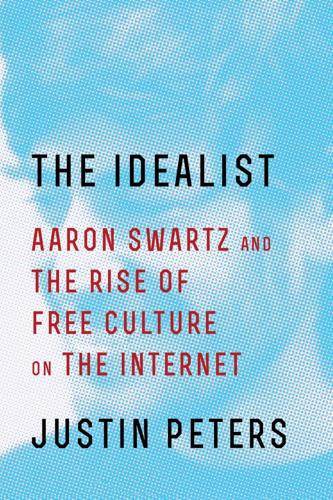
The Idealist: Aaron Swartz and the Rise of Free Culture on the Internet
by
Justin Peters
Published 11 Feb 2013
But some malign entity had altered the code to show users the stories of the entity’s choosing.66 That malign entity turned out to be Google, which specialized in projects that appeared to be for the public’s benefit, in keeping with its unofficial corporate motto: “Don’t be evil.” In Bubble City, Swartz opined on this hollow-hearted promise. “Don’t Be Evil was some hacker’s PR ploy that got out of hand,” Swartz wrote. “Paul Buchheit, the guy who made Gmail, suggested it in an early meeting and Amit Patel, another early Googler starting [sic] writing it on whiteboards everywhere. A journalist saw it and the rest was history—but don’t be mistaken, it was never official corporate policy.”67 How could it be? Moral Mazes had taught Swartz that companies cared first and foremost about their own survival and self-perpetuation, and evaluated their business strategies based on those criteria.

Risk: A User's Guide
by
Stanley McChrystal
and
Anna Butrico
Published 4 Oct 2021
When we aren’t clear on who we are or what we’re trying to do, it’s hard to prioritize actions. Tensions. Misunderstood or conflicting narratives can undermine confidence and committment. Brand Damage. Untrue or ineffective brand narratives can destroy the credibility of our products and businesses. Don’t Be Evil Paul Buchheit, Google’s twenty-third employee, had a sense of humor. He was sitting in a meeting in early 2000 to discuss and choose the company’s values, and he recommended a simple three-word phrase: “Don’t be evil.” Buchheit applauded Google for turning away from the malevolent temptations of some advertising agencies.

The Age of Surveillance Capitalism
by
Shoshana Zuboff
Published 15 Jan 2019
Carobus et al., Content-targeted advertising using collected user behavior data, US20140337128 A1, filed July 25, 2014, and issued November 13, 2014, http://www.google.com/patents/US20140337128; Jeffrey Dean, Georges Harik, and Paul Buchheit, Methods and apparatus for serving relevant advertisements, US20040059708 A1, filed December 6, 2002, and issued March 25, 2004, http://www.google.com/patents/US20040059708; Jeffrey Dean, Georges Harik, and Paul Buchheit, Serving advertisements using information associated with e-mail, US20040059712 A1, filed June 2, 2003, and issued March 25, 2004, http://www.google.com/patents/US20040059712; Andrew Fikes, Ross Koningstein, and John Bauer, System and method for automatically targeting web-based advertisements, US8041601 B2, issued October 18, 2011, http://www.google.com/patents/US8041601; Georges R.
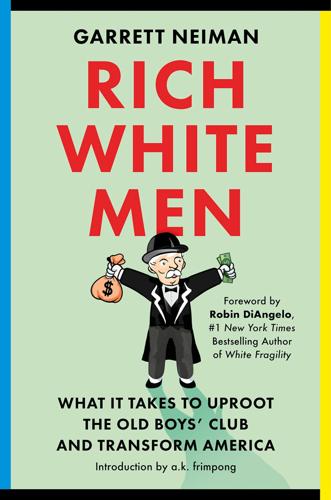
Rich White Men: What It Takes to Uproot the Old Boys' Club and Transform America
by
Garrett Neiman
Published 19 Jun 2023
Reddy, “The Struggle against Apartheid: Lessons for Today’s World,” UN Chronicle, September 2007, https://www.un.org/en/chronicle/article/struggle-against-apartheid-lessons-todays-world. 17. Alexandre Tanzi and Mike Dorning, “Top 1% of U.S. Earners Now Hold More Wealth Than All of the Middle Class,” Bloomberg, October 8, 2021, https://www.bloomberg.com/news/articles/2021-10-08/top-1-earners-hold-more-wealth-than-the-u-s-middle-class. 18. Paul Buchheit, “The Inequality to Be Suffered by Our Children,” United Steelworkers blog, December 18, 2018, https://usw.org/blog/2018/the-inequality-to-be-suffered-by-our-children. 19. Nathaniel Lewis and Matt Bruenig, “The Wealthiest 1% Inherited an Average of $4.8 Million,” People’s Policy Project, October 10, 2017, https://www.peoplespolicyproject.org/2017/10/10/the-wealthiest-1-inherited-an-average-of-4-8-million/. 20.

Work Rules!: Insights From Inside Google That Will Transform How You Live and Lead
by
Laszlo Bock
Published 31 Mar 2015
No one gets a “20 percent time” packet at orientation, or pushed into distracting themselves with a side project. Twenty percent time has always operated on a somewhat ad hoc basis, providing an outlet for the company’s brightest, most restless, and most persistent employees—for people determined to see an idea through to completion, come hell or high water. For example, engineer Paul Buchheit worked on Gmail for two and half years before he finally persuaded company brass, who worried about stretching Google too far beyond search, to launch the thing. Googlers don’t restrict themselves to creating products. They also involve themselves in deciding how we run the company. A few years back, we gave a group of thirty engineers anonymous performance and pay data for everyone in engineering, and allowed them to shape how bonuses would be allocated.
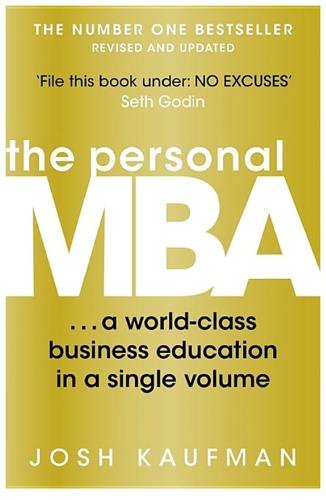
The Personal MBA: A World-Class Business Education in a Single Volume
by
Josh Kaufman
Published 2 Feb 2011
SHARE THIS CONCEPT: http://book.personalmba.com/minimum-economically-viable-offer/ Incremental Augmentation Pick three key attributes or features, get those things very, very right, and then forget about everything else . . . By focusing on only a few core features in the first version, you are forced to find the true essence and value of the product. —PAUL BUCHHEIT, CREATOR OF GMAIL AND GOOGLE ADSENSE Once your MEVO is selling and you’ve proven that your CIAs are valid, you’re in good shape, but you’re not finished. If you’re committed to making your offer as good as it can be, you’ll need to keep making small changes that improve the offer if you want to stay competitive and attract more customers.

Surveillance Valley: The Rise of the Military-Digital Complex
by
Yasha Levine
Published 6 Feb 2018
Krishna Bharat, Stephen Lawrence, Mehran Sahami, and Amit Singhal, “Serving Advertisements Using User Request Information and User Information,” EP1634206 A4, patent application, Google Inc., June 1, 2004, https://patentscope.wipo.int/search/en/detail.jsf?docId=WO2004111771; Jeffrey Dean, Georges Harik, and Paul Buchheit, “Serving Advertisements Using Information Associated with E-mail,” US20040059712 A1, patent application, Google Inc., June 2, 2003, https://www.google.com/patents/US20040059712. 56. “Testimony of Chris Jay Hoofnagle, Director, Electronic Privacy Information Center West Coast Office, Privacy Risks of E-mail Scanning,” California Senate Judiciary Committee, March 15, 2005, http://web.archive.org/web/20170527221053/https://epic.org/privacy/gmail/casjud3.15.05.html. 57.
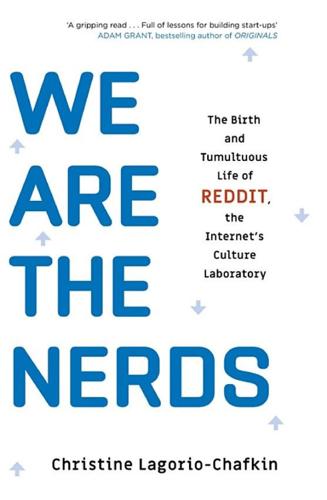
We Are the Nerds: The Birth and Tumultuous Life of Reddit, the Internet's Culture Laboratory
by
Christine Lagorio-Chafkin
Published 1 Oct 2018
The third-largest set of stakeholders, he announced, was a brand-new list of individuals who owned tiny shares amounting in total to less than 1 percent of the company. This cadre included a few well-known venture capitalists, such as Dave McClure, who ran an incubator called 500 Startups; Keith Rabois, a fellow PayPal Mafioso of Wong’s and a partner at Khosla Ventures; Paul Buchheit, the creator of Gmail who now worked at Y Combinator; Thrive Capital founder Joshua Kushner, the brother of Donald Trump’s son-in-law, Jared; and Marc Andreessen, the Netscape cofounder who’d cofounded the powerful venture capital firm Andreessen Horowitz. Also mentioned were some people familiar to the employees, including Ohanian, Pao, and Jeremy Edberg, Reddit’s original systems administrator.
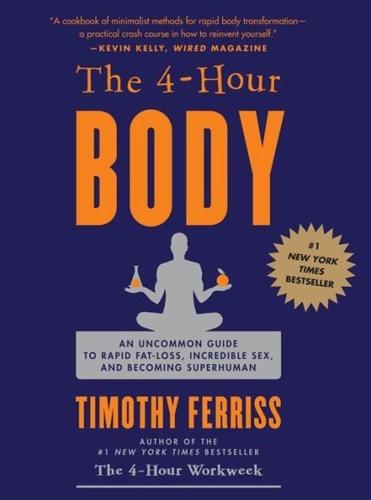
The 4-Hour Body: An Uncommon Guide to Rapid Fat-Loss, Incredible Sex, and Becoming Superhuman
by
Timothy Ferriss
Published 1 Dec 2010
Wakerupper (www.wakerupper.com) Wakerupper is an online phone reminder tool. Schedule reminder calls to ring to your cell phone at specific times. REVERSING INJURIES REVERSING “PERMANENT” INJURIES Hacking is much bigger than clever bits of code in a computer—it’s how we create the future. —Paul Buchheit, creator of Gmail I recently went to a new doctor and noticed he was located in something called the Professional Building. I felt better right away. —George Carlin Less than half of my MRIs and X-rays from 2004 to 2009. The French explorer and marine biologist Jacques Cousteau was once asked how he defined a “scientist.”
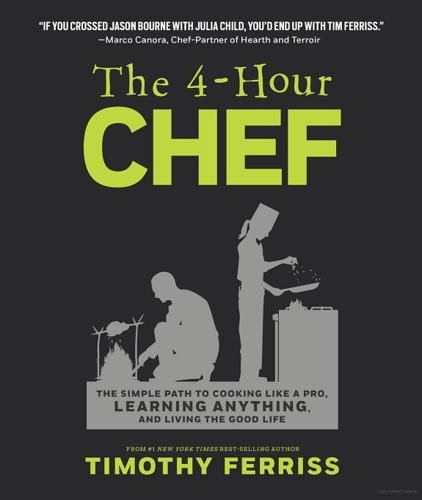
The 4-Hour Chef: The Simple Path to Cooking Like a Pro, Learning Anything, and Living the Good Life
by
Timothy Ferriss
Published 1 Jan 2012
Whisk in the vanilla and 1 drop thyme oil. 04 Transfer the mixture to a spouted measuring cup (for easier pouring) and fill the prepared molds; let cool, then transfer to the refrigerator to chill and set for at least 4 hours. 05 Carefully remove from the molds, using a bamboo skewer or toothpick. Serve, or cover and refrigerate for up to 1 week. THE SCIENCE OF SPHERIFICATION * * * “Hacking is much bigger…than clever bits of code in a computer—it’s how we create the future.” —PAUL BUCHHEIT, CREATOR OF GMAIL * * * Spherification is a cool-looking subset of the gelling process. Certain carbohydrate-based gelling compounds, such as alginate, will only gel in the presence of mineral salts like calcium chloride. This allows you to work magic in the kitchen. First, prepare a flavorful liquid (melon juice mixed in with alginate, for example) that contains the gelling compound.

Facebook: The Inside Story
by
Steven Levy
Published 25 Feb 2020
By the time Zuckerberg had decided that “awesome” didn’t strike the right tone for a feedback feature, and renamed it “like,” Facebook had purchased FriendFeed. (The prize, besides taking a potential threat to Facebook off the market, was co-founder Bret Taylor, a top-notch former Google engineer who would later become Facebook’s CTO.) Paul Buchheit, the other FriendFeed co-founder, was amused to learn Facebook was working on a Like button, but thought it was a good idea. “I can’t definitively say that FriendFeed was where that word came from. But it’s an interesting example of the difference just a single word makes. It would be weird if it just said ‘awesome’ everywhere, right?